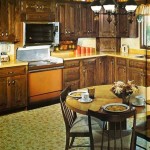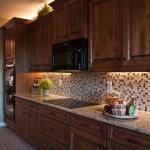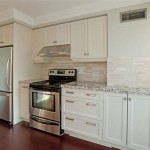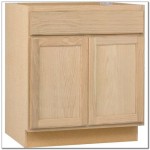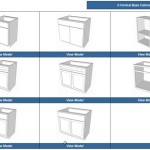The Definitive Guide to Choosing and Using the Right Cleaner for Kitchen Cabinets
Kitchen cabinets are a significant investment and a focal point of any kitchen. Maintaining their cleanliness not only enhances the aesthetic appeal of the space but also prolongs their lifespan. However, choosing the appropriate cleaner for kitchen cabinets requires careful consideration, as different materials and finishes demand specific cleaning agents and techniques. Using the wrong product can lead to damage, discoloration, and a compromised finish. This article provides a comprehensive overview of the various types of kitchen cabinets, the common types of grime they accumulate, and the best cleaning solutions and methods for each scenario.
Understanding Different Types of Kitchen Cabinet Materials and Finishes
The first step in selecting the correct cleaner for kitchen cabinets is to identify the material they are made from and the type of finish applied. This is crucial because some cleaning agents that are safe for one material might be detrimental to another. The most common cabinet materials include wood (solid wood and wood veneer), laminate, and painted surfaces. Each material reacts differently to moisture, chemicals, and abrasive cleaners.
Solid Wood Cabinets: Cabinets made of solid wood are generally the most durable but also the most susceptible to damage from excessive moisture. Common wood types used in kitchen cabinets include oak, maple, cherry, and birch. The finish applied to solid wood cabinets protects the wood and gives it its characteristic appearance.
Wood Veneer Cabinets: Wood veneer cabinets consist of a thin layer of real wood adhered to a substrate, such as particleboard or MDF (Medium-Density Fiberboard). These cabinets offer the look of solid wood at a lower cost. However, the veneer layer is delicate and can be easily damaged by abrasive cleaners or excessive moisture.
Laminate Cabinets: Laminate cabinets are made from a synthetic material bonded to a substrate. They are highly durable, resistant to scratches and stains, and relatively easy to clean. Laminate cabinets are available in a wide range of colors and patterns, making them a popular choice for modern kitchens.
Painted Cabinets: Painted cabinets can be made of wood, MDF, or a combination of materials. The paint finish provides a protective layer and allows for a wide variety of color options. However, painted surfaces are susceptible to chipping and scratching, and certain cleaning agents can dull or discolor the paint.
The finish applied to the cabinet material is equally important. Common finishes include: varnishes, lacquers, polyurethane, and conversion varnishes. Each finish offers varying degrees of protection and durability. Determining the type of finish will inform the selection of the appropriate cleaning agent.
Identifying Common Types of Grime on Kitchen Cabinets
Kitchen cabinets are exposed to a variety of substances that can accumulate over time and create stubborn grime. These include grease splatters from cooking, food spills, dust, and fingerprints. The location of the cabinet within the kitchen also contributes to the type and amount of grime present. Cabinets near the stove are more likely to accumulate grease, while those near the sink are more prone to water stains and soap residue.
Grease and Oil: Grease and oil splatters are common culprits for cabinet grime, particularly around the stove and cooktop. These substances can attract dust and dirt, creating a sticky, difficult-to-remove layer.
Food Spills: Food spills, such as sauces, liquids, and crumbs, can stain or damage cabinet surfaces if not cleaned promptly. Acidic or sugary substances can be particularly damaging.
Dust and Dirt: Dust and dirt accumulate on all surfaces, including kitchen cabinets. Regular dusting prevents the buildup of grime and makes it easier to maintain cleanliness.
Fingerprints: Fingerprints, especially on darker finishes, can be unsightly and difficult to remove, especially if they contain oils or food residue.
Water Stains and Soap Residue: Cabinets near the sink are susceptible to water stains and soap residue from splashes and spills. These substances can leave a dull film on the surface if not cleaned regularly.
Choosing the Right Cleaning Solution for Specific Cabinet Types
Selecting the appropriate cleaning solution is critical for effectively removing grime without damaging the cabinet finish. Abrasive cleaners, harsh chemicals, and excessive moisture can all harm kitchen cabinets. The following recommendations provide guidance on choosing the right cleaning solution for each cabinet type.
For Solid Wood Cabinets: A mild dish soap solution is often the safest and most effective option for cleaning solid wood cabinets. Mix a small amount of dish soap with warm water and use a soft cloth to wipe down the cabinets. Avoid using excessive water, as it can seep into the wood and cause damage. For stubborn grease or stains, a solution of equal parts water and white vinegar can be used, but it should be tested in an inconspicuous area first. Always wipe the cabinets dry with a clean cloth to prevent water spots.
For Wood Veneer Cabinets: Wood veneer cabinets require a gentler approach than solid wood. Use a mild dish soap solution and avoid abrasive cleaners or scrubbing pads. Apply the solution sparingly and wipe the cabinets dry immediately. Avoid using vinegar-based cleaners, as the acid can damage the veneer. Consider using a wood cleaner specifically designed for delicate wood surfaces.
For Laminate Cabinets: Laminate cabinets are relatively easy to clean. A general-purpose cleaner or a mild dish soap solution is usually sufficient. For tougher stains, a solution of baking soda and water can be used as a gentle abrasive. Avoid using harsh chemicals or abrasive cleaners, as they can scratch the laminate surface. Ensure the surface is dried off after cleaning.
For Painted Cabinets: Painted cabinets are often susceptible to chipping and scratching, so a gentle approach is essential. A mild dish soap solution is generally the best option. Avoid using abrasive cleaners or scrubbing pads, as they can damage the paint. For stubborn stains, a magic eraser can be used sparingly, but it should be tested in an inconspicuous area first. Ensure that the surface is wiped dry after cleaning.
Specific Cleaning Solution Options:
- Mild Dish Soap Solution: A mixture of a few drops of dish soap in warm water.
- White Vinegar Solution: A 50/50 mixture of white vinegar and water. Use with caution on wood veneer.
- Baking Soda Paste: A paste made from baking soda and water. Excellent for gentle scrubbing.
- Commercial Kitchen Cabinet Cleaners: Available at most stores, these cleaners are formulated specifically for kitchen cabinets. Always follow the manufacturer's instructions.
Proper Cleaning Techniques: A Step-by-Step Guide
Even with the right cleaning solution, improper cleaning techniques can damage kitchen cabinets. Following a systematic approach ensures a thorough cleaning without compromising the finish or material. The following steps provide a guide to cleaning kitchen cabinets effectively.
Step 1: Preparation: Before beginning, gather the necessary supplies, including a cleaning solution of choice, soft cloths (microfiber cloths are ideal), a soft-bristled brush (for crevices and corners), and a bucket of warm water. Protect the countertops and floor with drop cloths or towels to prevent spills and drips.
Step 2: Dusting: Use a soft cloth or a duster to remove loose dust and debris from the cabinet surfaces. This step is crucial for preventing the creation of a muddy film when applying the cleaning solution.
Step 3: Cleaning: Dip a clean cloth into the cleaning solution and wring out the excess moisture. Gently wipe down the cabinet surfaces, paying attention to areas with visible grime or stains. For stubborn stains, allow the cleaning solution to sit for a few minutes before wiping. Use a soft-bristled brush to clean crevices and corners.
Step 4: Rinsing (If Necessary): If using a cleaning solution that leaves a residue, rinse the cabinets with a clean, damp cloth. Ensure that the cloth is wrung out well to prevent excessive moisture.
Step 5: Drying: Immediately dry the cabinets with a clean, dry cloth. This step is essential for preventing water spots and ensuring a streak-free finish.
Step 6: Polishing (Optional): For wood cabinets, a wood polish or conditioner can be applied after cleaning to enhance the shine and protect the finish. Follow the manufacturer's instructions for application.
Preventative Measures to Maintain Clean Kitchen Cabinets
Prevention is key to maintaining clean kitchen cabinets and minimizing the need for intensive cleaning. Implementing preventative measures can significantly reduce the accumulation of grime and extend the lifespan of the cabinets. These are a few preventative measures:
Regular Dusting: Dusting the cabinets regularly, at least once a week, prevents the buildup of dirt and grime. Use a soft cloth or a duster to remove loose particles.
Immediate Spill Cleanup: Clean up spills immediately to prevent stains and damage. Use a damp cloth to wipe away spills as soon as they occur.
Proper Ventilation: Ensure adequate ventilation in the kitchen to reduce the accumulation of grease and moisture. Using the range hood while cooking helps to remove airborne grease particles.
Protective Measures: Consider using placemats and coasters on countertops and shelves to protect them from spills and scratches. Install shelf liners to prevent stains and damage to the interior of the cabinets.
Regular Inspection: Inspect the cabinets regularly for signs of damage or wear. Addressing minor issues promptly can prevent them from escalating into more significant problems.
By understanding the types of materials and finishes used in kitchen cabinets, identifying common types of grime, choosing the right cleaning solutions and techniques, and implementing preventative measures, individuals can effectively maintain the cleanliness and prolong the lifespan of these essential kitchen elements. The effort invested in proper cleaning and maintenance will result in a more attractive and functional kitchen space for years to come.

How To Clean Kitchen Cabinets 9 Basics Bob Vila

How To Clean Kitchen Cabinets Everyday Skate

How To Clean Kitchen Cabinets Dianella Polishing

Kitchen Cleaning Checklist Weiman

Kitchen Cabinet Cleaning Tips For Stained Or Painted Cabinets

How Often Should You Really Clean Your Kitchen Cabinets

We Tried 5 Methods To Clean Greasy Wood Cabinets And The Winner Is Ridiculously Effective Kitchn Cleaning Kitchen

How To Clean Grimy Kitchen Cabinets With 2 Ingredients

Ultimate Guide To Cleaning Kitchen Cabinets Cupboards Foodal
:max_bytes(150000):strip_icc()/ways-to-clean-wood-kitchen-cabinets-3017289-01-765f893e7cca49a1ab72d7c49efdf518.jpg?strip=all)
Tips For Cleaning Food Grease From Wood Cabinets
Related Posts



